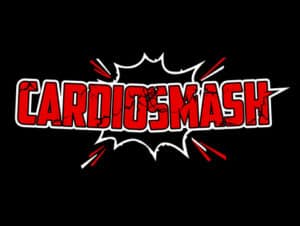Intermittent fasting has quickly grown in popularity over the last few years primarily is a way to lose weight. It’s an easy way to restructure your meals and end up eating less, as well as enjoying the benefits of a short fast every day. But what if you don’t think you need to lose weight? What if you are already skinny? Is fasting good for skinny people too?
The list of benefits of intermittent fasting is quite long. Aside from any weight loss that those who are overweight may benefit from, there are many positives to be gained by those who don’t need to lose weight.
These may include:
- Improved digestion
- Improved insulin sensitivity
- More regular eating patterns
- Better skin
- Increased longevity
- Improved brain function
- Many more
There are few things that you can do that are simple as incorporating intermittent fasting into your daily routine that will benefit your health, lifestyle and physique to such a great extent.
There are some considerations and questions to ask yourself. There are also a few options for which style of fasting you choose to pursue. Let’s take a look.
Are you really lean?
If you consider yourself skinny, the first thing you need to ask yourself is are you really lean? I mean, just because you are 5ft 10, 120lbs, doesn’t mean that you’re all bone and muscle. You may be carrying more fat than you think. If you can’t see your abs and you have little muscle definition, you’re probably not as lean as you may have previously believed. Be honest with yourself. Are you genuinely happy with the way you look at your level of leanness?
It is important to check your body fat to find the real data. if you don’t have your own body fat monitor you should consider getting one so that you can test it regularly. There are many different models available on the market, with some being quite inexpensive and pretty darn accurate.
The body fat level which would be considered lean will vary according to age and gender. For younger men (below 40) you’ll want to be below 15% to have a flat stomach and be in good shape, but below 10% to have serious definition and visible abs.
For women the same age, the percentages are higher as the female body composition is different. In the under 40 age range, you’ll generally need to be below 25% and 15% for similar goals.
If your body fat is higher than in these ranges, then you will likely benefit from the fat loss that can result from fasting.
If you’re lean enough already, a ton of good things can still come from fasting.
If you really want to be sure that you are actually progressing, then you need to be monitoring your body fat. just because you’re losing pounds doesn’t mean you’re getting less fat, you could be losing lean mass. Conversely, if you’re trying to ‘bulk up’ you may think that you’re gaining muscle, but you could actually be gaining more fat than you realize. To be sure, check out this Omron handheld body fat reader available on Amazon. This is the one I have at home and I use it regularly to give me a clear and accurate reading of my body composition.
Fasting when you’re skinny fat.
As I mentioned before, skinny and lean can be two different things, just because you look skinny with your shirt on, doesn’t mean you can’t grab a couple of rolls on your belly if you reach underneath!
If people generally refer to you as skinny, and you have no muscle definition and maybe a little spare tire around the middle, you are skinny fat.
The good news is, intermittent fasting is one of the best ways to get your body composition to where you want it.
People who are skinny fat typically need to gain some lean mass as well as lose some fat. As long as you eat clean while doing intermittent fasting, and get plenty of high-quality protein, you can still gain muscle.
Can you fast if you are not skinny fat, but just skinny?
Even if you are already genuinely lean then yes you could absolutely still benefit from adding intermittent fasting to your lifestyle.
Better digestion, more control over your eating habits, as well as countless other health benefits like increased longevity, clearer skin, and a faster mind can also be yours simply by not eating for a minimum of 13 hours each day. Really 16 hours is even better and would be a better minimum fast.
Can you fast if you are underweight?
If you are truly underweight to the point where it’s not healthy, or you are really trying to put on weight, obviously fasting is probably not for you.
Only a medical professional can tell you if you are underweight and need to gain weight. Everybody should check with their doctor before they start fasting, especially if they have other concerns about their health or are on medication, or receiving medical treatment of any kind.
Can you get bigger with intermittent fasting?
When combined with a good protein-heavy diet, plenty of sleep, and lots of resistance training you can still gain plenty of muscle while doing intermittent fasting.
You really cannot slack off on the sleep or the diet and still expect to gain muscle no matter how many hours you spend lifting weights. But if you are eating enough quality lean proteins and healthy fats and carbs during the feeding window, the fasting may even help by creating a more favorable hormonal profile. It is well known that 12 or 13 hours into a fast your body releases quite a lot of growth hormone which, not only helps you burn fat but is also highly anabolic.
Should intermittent fasting be done everyday?
It depends how far you need to go to reach your goals, and how fast you want to get there.
If you just want to lose 1-2% more body fat, or maybe just to maintain your current level, you could fast for a 16 to 18 hours for 5 days a week.
If you are totally happy with your body composition and simply just want to get the added health benefits of fasting, feel free to fast just two or three days a week. Even if you only fast sporadically you can still reap rewards.
Another approach is to do a full 24 hours once a week. Even a 36-hour fast could be a good option to help reset your digestive system and cleanse yourself. This could be achieved by eating dinner on day 1, and then not eating again until breakfast on day 3.
How many calories kick you out of fasting?
Many people believe that you can consume up to 50 calories and still be in a fasted state. Some add the caveat that these cannot come from sugar. I think to be on the safe side you should avoid calories altogether until breaking the fast.
Staying away from all calories will mean that after all the sugar in your blood has been used up stored as fat, all of your energy is coming from your fat reserves. Depending on what, and how much you ate at your last meal, this could be anywhere from 6 to 12 hours after you finish eating.
Once you’ve gone this period of time without food and the true fast is really kicking in, you want want to sabotage that by eating some mints, or adding some sugar to your coffee will you? So stay away from food until your eating window!
What type of intermittent fasting should I do if I’m skinny?
The most popular forms of intermittent fasting are:
- 16:8 – fast for 16 hours a day, eat within an 8-hour window
- 18:6 – fast for 18 hours a day, eat within a 6 hour window
- OMAD – eat one meal a day, effectively fasting for 23 hours a day
- 5:2 – eat normally 5 days a week, fast for the entire day of the remaining 2 days. Some plans allow up to 500 calories on the fasting days. (It’s questionable as to whether these are really fasts).
If you are skinny fat and need to reduce your body fat, you should probably do 18:6. To accelerate the fat loss you could even modify it to 20:4. These plans will really maximize your daily benefit of fasting.
If you are already lean and you simply want some of the other benefits of fostering, really any of these plans will be good.
Anybody who is new to fasting should probably start with the 16:8. the simplest way to implement this is to eat lunch and dinner only. If you have lunch at around 12pm, and dinner by 7pm, you’ll be right on track. You can even allow some snacks in between if you feel like it – as long as you are within your caloric limit for the day.
Conclusion
Intermittent fasting can be a great addition to nearly anyone’s lifestyle. It’s the simplest possible way to get control of your body composition and gain some awesome health benefits. you could save money, and cut out the hassle of all those extra meals while doing something great for your health! Even if you’re already skinny, whether you are lean or not, you’ll be really glad that you tried fasting.
Related Posts:
20/4 Fasting, is it better than 16/8, 18/6, or OMAD?
The choice becomes a balance between which method you will be able to stick to, and how badly you want to see the results. The 20/4 protocol is a great choice for those that want best results with a little less hunger than on OMAD. It’s a close second to OMAD for effectiveness, but allows you to keep eating just a little longer!
20 hours without food is quite a long time, and you will find that you will get full quite quickly after breaking your fast. This will help you eat at a caloric deficit each day too. This gives you the best of both worlds, so to speak, with the benefits of a long fast, but an eating window that feels much longer than OMAD.
The main takeaway is this: a 20 hour fast will do wonders for your health, and for your waistline. You’ll feel fresh, alert, and light on your feet; but you can eat enough to be content within 4 hours without having the time to really overdo it. So pick whichever approach works for your lifestyle, but 20/4 is definitely worth a try.
Intermittent Fasting: When Should I Do Cardio?
For most types of Intermittent Fasting (IF), the best approach is to do your cardio 1-2 hrs after breaking your fast. Provided that you don’t eat too much early on during your eating window. This will work for anyone doing 18/6 or 16/8. Simply break your fast with a healthy but light meal or snack, maybe 200-400 calories, then wait about an hour then do your cardio. This way you will have more energy to have a more intense cardio workout, and you’ll reduce muscle breakdown.

